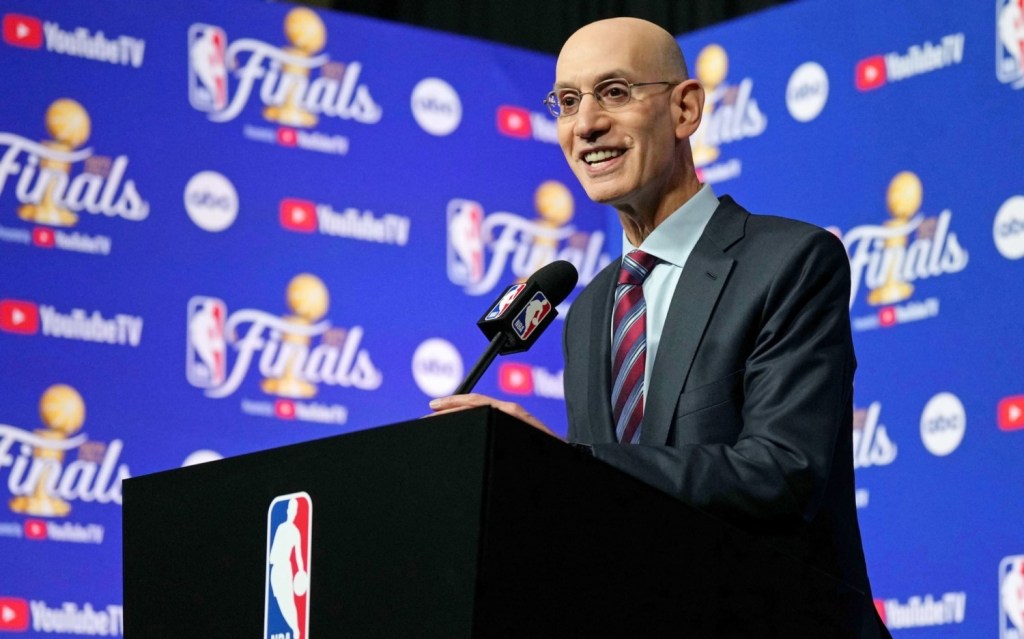Twenty years ago, the National Basketball Association transformed the sports media landscape by moving most of its games from free over-the-air television to pay cable networks.
The question now is whether the league will spark another seismic shift by embracing the brave new world of streaming TV.
The NBA’s expected to seek upward of $75 billion for its next media rights package starting in 2025. It boasts rising superstars like Ja Morant and Jayson Tatum, a tech-savvy audience, and global appeal.
- On the other hand, its cable-heavy distribution model is under heavy pressure from cord-cutters in the U.S. as younger consumers shift to streaming services.
- Under current deals that run through the 2024-25 season, Disney’s ABC/ESPN and Warner Bros. Discovery’s TNT are paying a combined $24 billion, or $2.6 billion annually.
As the new season tips off in San Francisco and Boston on Tuesday night, the league’s media strategies could be coming full circle.
Back in January 2002, ESPN was the insurgent that sold the NBA on moving mostly to cable from broadcast — ending the 12-year run of the popular “NBA on NBC,” which brought us Michael Jordan’s dynastic Chicago Bulls, Bob Costas, and John Tesh’s “Roundball Rock” theme song.
Now the tables have turned. It’s ESPN and TNT, and their legacy media parents, that will have to play defense against Amazon and Apple, as well as possible contenders like Google.
And don’t count out sports betting giants like FanDuel and DraftKings, that want to create a “watch and bet” environment that includes in-game wagering.
The Tradeoff
Despite their bottomless pockets, the tech giants will have to prove that the NBA won’t lose most of its audience by moving a large percentage of its national games to streaming.
If you think the bidding was lucrative two decades ago, you ain’t seen nothing yet.
“I would say that all of the leading technology companies are interested in the NBA. Amazon is just one of them. I think Apple, I think Google. All of them,” said John Kosner, former NBA and ESPN executive turned media advisor and the founder of Kosner Media.
“And keep in mind the definition of what’s a ‘rights package’ going forward doesn’t have to be what we grew up with,” he added. “A company like Discord (a social platform with 150 million monthly users) could become an NBA rights holder at some point, too. I think they’re all interested.”
- This season, Disney will air 82 games on ESPN and 18 on ABC, as well as the NBA Playoffs and NBA Finals.
- ESPN boss Jimmy Pitaro has made it clear he wants to stay in business with the league.
“It’s an incredibly important property for us. We also see that property as ascending — younger demographics. Right now, I think they have more parity than we’ve seen in a long time,” Pitaro told The Athletic. “We see young stars who are starting to catch on in the zeitgeist. We are incredibly excited about the NBA.”
NBA Game-Changer
The stakes are high for the $10 billion league as it tips off its 76th season.
The NBA’s pioneering embrace of cable TV two decades ago sparked a migration of sports properties from traditional networks.
- The NFL’s first primetime showcase, “Monday Night Football,” shifted to ESPN from ABC in 2006.
- A year later, Major League Baseball’s first-round playoff games were shown exclusively on cable TV (TBS) for the first time.
- College football’s former Bowl Championship Series moved to ESPN from ABC and Fox Sports in 2011.
The NBA never completely abandoned free TV — ABC has aired the NBA Finals, as well as select weekend matchups, since 2003.
But the ability to pocket higher rights fees from cable operators was the primary reason why sports leagues like the NBA and MLB moved the bulk of their games to cable.
ESPN offered a dual revenue stream from both advertisers and subscribers. Broadcasters like NBC (reliant only on ad revenue) couldn’t compete.
NBC’s Dick Ebersol lamented at the time, ”In the future it will become almost impossible for broadcast television sports to match the power of those subscriber fees.”
History Repeats?
Cord-cutting has significantly slashed the footprint of pay cable operators. During fiscal year 2021, for example, ESPN’s distribution shrank 10% to 76 million U.S. homes — a 24% drop from a high of 100 million a decade ago.
Cash-rich Amazon and Apple are expanding into live sports with each boasting market capitalizations of over $1 trillion.
Amazon is paying the NFL $1 billion a year to serve as the exclusive carrier of “Thursday Night Football” through 2033.
- The deal marks the first time the NFL sold an exclusive national rights package to a digital streaming service.
- “TNF” previously aired across a “tri-cast” of Fox Sports, NFL Network, and Amazon.
- Separately, Amazon Prime also scored a package of 21 New York Yankees games in the team’s home TV market.
Meanwhile, Apple signed a $2.5 billion, 10-year deal to exclusively show all Major League Soccer matches — and is slowly moving into baseball, too.
- Starting in 2023, Apple’s streaming service will take over all local and national MLS games currently carried by ESPN, Fox, Twitter, and regional sports networks.
- In March, Apple and Major League Baseball agreed to a streaming deal that pays the league an estimated $85 million a year for a package of “Friday Night Baseball” games.
- In its first season streaming MLB, Apple exclusively scored a key New York Yankees game at the height of Aaron Judge’s home run record chase.
Google is said to be pursuing the NFL’s Sunday Ticket package of out-of-market games, along with Apple, Amazon, and Disney.
The league wants the winning bidder to cough up $2.5 billion annually — a big spike from DirecTV’s $1.5 billion. The NBA sees the value of its media rights increasing, too.
Silver Holds the Cards
With Amazon in the mix, the NFL scored its long-term $100 billion-plus media rights payday last year. It’s the NBA’s turn now.
Adam Silver’s NBA is the most tech-forward league, and the savvy commissioner has plenty of options as he looks down the road.
The league could re-up with ESPN and TNT for linear TV while selling an exclusive streaming package.
Or it could roll the dice and embrace a streaming model the way it went mostly cable TV 20 years ago. It’s not implausible — the NBA already has a $1.5 billion per year streaming deal with Tencent Holdings in China.
The Answer Is Always Money
The late, great sports TV producer Don Ohlmeyer used to say, “The answer to all your questions is money.”
It remains to be seen whether a bet on streaming will pay off like the NBA’s gamble on cable.
But given the Association’s history of bold moves, don’t be surprised if the league makes a fast break toward what it sees as the media future of sports, especially if embracing non-traditional platforms gives it a shot at NFL-level media rights revenue — the coveted $100 billion figure.
That could mean doing business with Amazon, Apple, or Google. Either way, these negotiations won’t be a lay-up for ESPN and TNT.
Look for a bidding war that will go right down to the buzzer.



